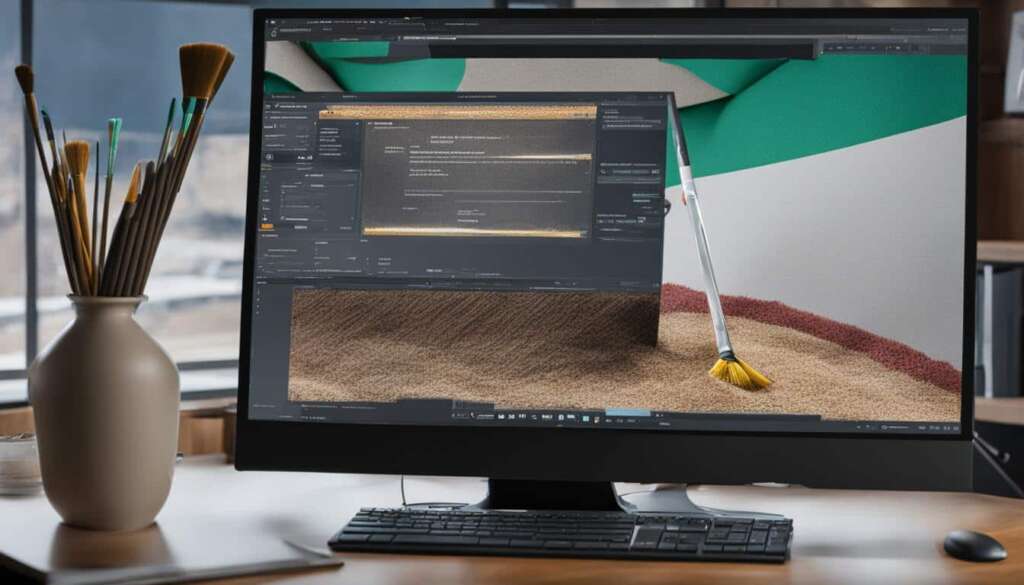Table of Contents
Shipping a computer can be stressful, especially due to their fragility and value. However, with the right knowledge and steps, you can ensure that your computer arrives safely and securely at its destination. This guide will provide you with all the information and tips you need to properly pack and ship a PC, including the necessary supplies and packaging methods. By following these steps, you can minimize the risk of damage and ensure that your computer is ready to use upon arrival.
Packing and shipping a computer may seem like a daunting task, but it can be broken down into five simple steps. First, you need to wrap the desktop and monitor individually with plastic wrap and seal them tightly with packing tape. This provides protection against moisture and damage. If you have the original box, you can use it by sealing it with packing tape, wrapping it with bubble wrap, and adding cushioning material at the bottom. However, if you don’t have the original box, you can wrap each component with bubble wrap and place them in a shipping box, filling any empty spaces with filler material. Finally, seal the top of the box with packing tape and attach a clearly legible shipping label. This way, your computer will be securely packed and ready for shipping.
When shipping a computer, it’s important to select the right shipping box to ensure proper protection. If you have the original box that the computer came in, it’s recommended to use it, as it provides a reasonable level of protection. For older computers or if you don’t have the original box, you can find a suitable computer shipping box at a UPS Store® location. In terms of packing the computer, start by dusting it off and ensuring it’s free from any moisture. Protect the power button and other delicate components with cardboard or electrical tape, and place a layer of bubble wrap or foam between the keyboard and screen. Wrap the computer tower with plastic or bubble wrap, and place it in a padded computer box, filling any remaining space with additional packaging material. Shake the box gently to ensure it’s securely packed before sealing it with tape.
When it comes to shipping computers, there are several methods to consider. One option is to replace the equipment instead of relocating it, especially if the devices are old or not particularly valuable. Renting a truck and transporting the equipment yourself is another method, providing you with control over the packing and moving process. Parcel shipping through carriers like FedEx or UPS is a popular choice, although it’s important to ensure proper packing to prevent damages. Rideshare or peer-to-peer shipping services can also be cost-effective for long-distance moves, but it’s crucial to vet the vendors and pack the equipment carefully. Finally, hiring professional movers or sending via consolidated freight are options for those who prefer expert assistance and additional security measures. Consider your specific needs and circumstances to determine the most suitable method for shipping your computers and servers.
How to Pack and Ship a Computer in 5 Simple Steps
Packing and shipping a computer may seem like a daunting task, but it can be broken down into five simple steps. By following these steps, you can ensure that your computer is securely packed and ready for shipping.
Step 1: Wrap and Seal Desktop and Monitor
Start by wrapping the desktop and monitor individually with plastic wrap. This provides protection against moisture and damage during transit. Make sure to seal the plastic wrap tightly with packing tape to keep everything in place.
Step 2: Use the Original Box or Wrap Components
If you have the original box that your computer came in, you can use it for shipping. Seal the box with packing tape and wrap it with bubble wrap for additional protection. Add cushioning material at the bottom to absorb any shocks during transit.
If you don’t have the original box, don’t worry. You can wrap each component of the computer with bubble wrap and place them in a sturdy shipping box. Fill any empty spaces with filler material to prevent movement.
Step 3: Seal the Shipping Box
Once the components are securely placed in the shipping box, seal the top with packing tape. This ensures that the box remains closed throughout the shipping process and prevents any damage to the computer.
Step 4: Attach a Shipping Label
Attach a clearly legible shipping label to the top of the box. Make sure that all the necessary information, including the destination address and contact details, is clearly visible. This will help the shipping carrier process and deliver your computer accurately.
Step 5: Ensure Proper Handling
When handing over your computer for shipping, inform the shipping carrier about the fragile nature of the package. Request them to handle it with care throughout the shipping process to minimize the risk of damage.
With these five simple steps, you can pack and ship your computer with confidence. Whether you have the original box or need to wrap each component individually, following these guidelines will help protect your computer during transit and ensure it arrives safely at its destination.
Selecting the Right Shipping Box and Packing a Laptop
When shipping a laptop, it’s important to select the right shipping box to ensure proper protection. If you have the original box that the laptop came in, it’s recommended to use it, as it provides a reasonable level of protection. For older laptops or if you don’t have the original box, you can find a suitable laptop shipping box at a UPS Store® location.
In terms of packing the laptop, start by dusting it off and ensuring it’s free from any moisture. Protect the power button and volume buttons with cardboard or electrical tape, and place a layer of bubble wrap or foam between the keyboard and screen.
“It’s crucial to take the necessary precautions to safeguard your laptop during shipping,” says Sarah Johnson, a shipping expert at UPS. “Properly packing the laptop minimizes the risk of damage and ensures that it arrives in good condition.”
Wrap the shell of the laptop with plastic or bubble wrap, and place it in a padded laptop box, filling any remaining space with additional packaging material. Shake the box gently to ensure it’s securely packed before sealing it with tape.
By following these steps, you can have peace of mind knowing that your laptop is protected and ready for shipping.
Benefits of Selecting the Right Shipping Box
Choosing the appropriate shipping box for your laptop offers several advantages:
- Enhanced protection during transit
- Secure and snug fit for the laptop
- Prevention of movement and potential damage
- Professional appearance
Additionally, utilizing a laptop shipping box specifically designed for this purpose provides added peace of mind, knowing that your laptop is packed securely and ready for safe transport.
Essential Packing Materials
When packing a laptop for shipping, you’ll need the following materials:
- Original laptop box (if available)
- Laptop shipping box
- Plastic or bubble wrap
- Packing tape
- Padded laptop box
- Foam or bubble wrap for cushioning
- Cardboard or electrical tape
Having these materials on hand ensures that you can properly secure your laptop and minimize any potential damage that may occur during transit.
Different Methods for Shipping Computers and Servers
Shipping computers and servers requires careful consideration of various methods to ensure the safe transportation of these valuable devices. One option to ponder is replacing the equipment instead of relocating it, especially if they are outdated or hold minimal value. Another viable approach is renting a truck and taking charge of the packing and moving process, granting you full control over the handling of the items.
Parcel shipping through reputable carriers such as FedEx or UPS is a popular choice for many, given their reliable services. Nevertheless, it is crucial to prioritize proper packing techniques to mitigate the risk of damages during transit. For long-distance relocations, you might opt for cost-effective options like rideshare or peer-to-peer shipping services. However, it is imperative to thoroughly vet vendors and exercise caution while packing the equipment to avoid any unfortunate mishaps.
For those who prefer expert assistance and additional security measures, hiring professional movers or utilizing consolidated freight services are highly recommended. This ensures that your computers and servers are handled by knowledgeable individuals who specialize in shipping delicate and valuable items. Assess your specific needs and circumstances to determine the most appropriate method that guarantees the safe and secure shipping of your computers and servers.
FAQ
How do I pack and ship a desktop computer?
To pack and ship a desktop computer, wrap the desktop and monitor individually with plastic wrap and seal them tightly with packing tape. Then, either use the original box and seal it with packing tape, wrapping it with bubble wrap and adding cushioning material at the bottom, or wrap each component with bubble wrap and place them in a shipping box, filling any empty spaces with filler material. Finally, seal the top of the box with packing tape and attach a clearly legible shipping label.
What is the best way to pack and ship a laptop?
When packing and shipping a laptop, it is recommended to use the original box if available. Dust off the laptop and ensure it’s free from any moisture. Protect the power button and volume buttons with cardboard or electrical tape and place a layer of bubble wrap or foam between the keyboard and screen. Wrap the shell of the laptop with plastic or bubble wrap and place it in a padded laptop box, filling any remaining space with additional packaging material. Shake the box gently to ensure it’s securely packed before sealing it with tape.
What are the different methods for shipping computers and servers?
There are several methods for shipping computers and servers. You can replace the equipment instead of relocating it, rent a truck and transport the equipment yourself, use parcel shipping through carriers like FedEx or UPS, opt for rideshare or peer-to-peer shipping services, or hire professional movers or use consolidated freight for expert assistance and additional security measures. Choose the method that best suits your needs and circumstances.












